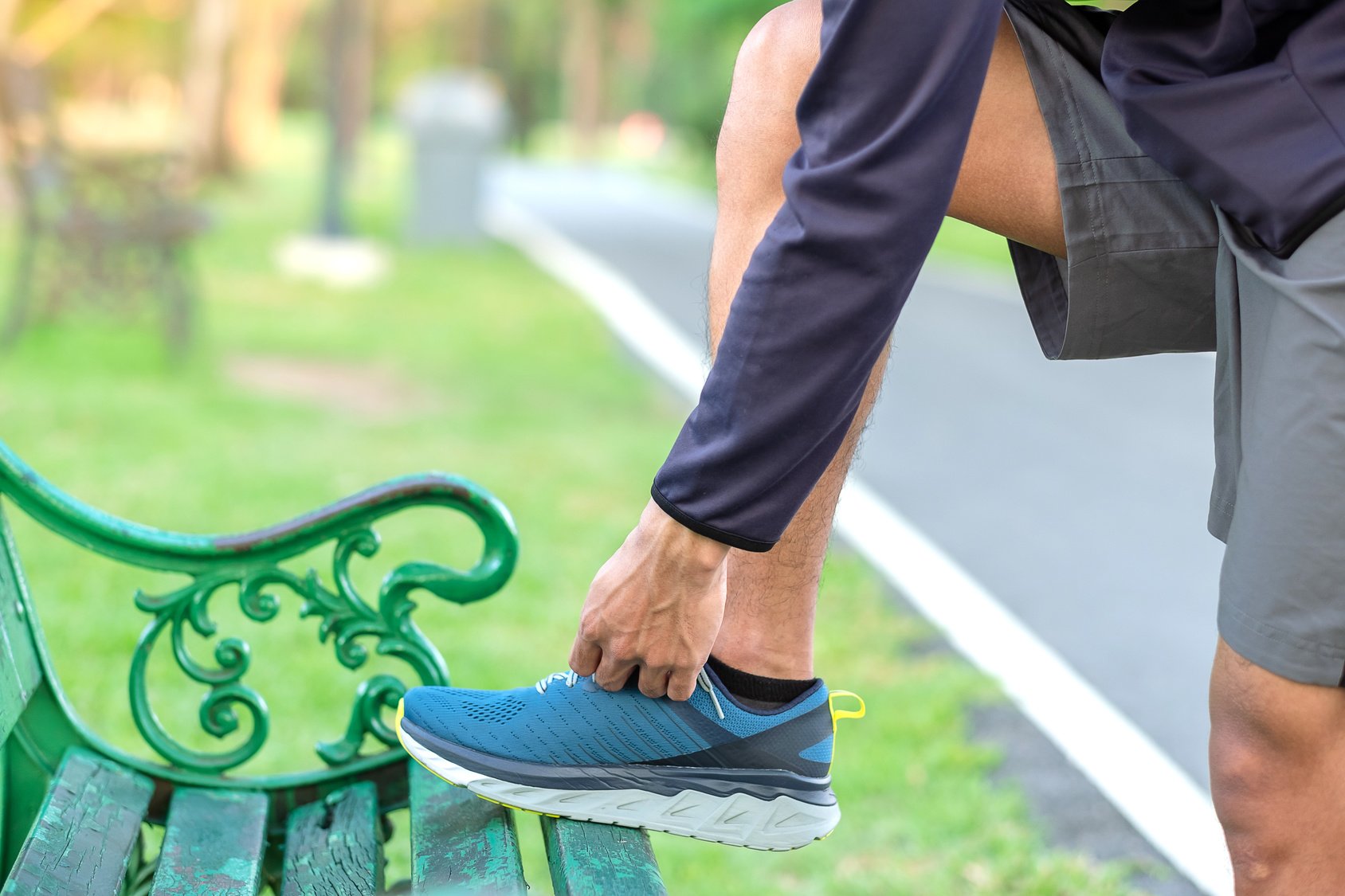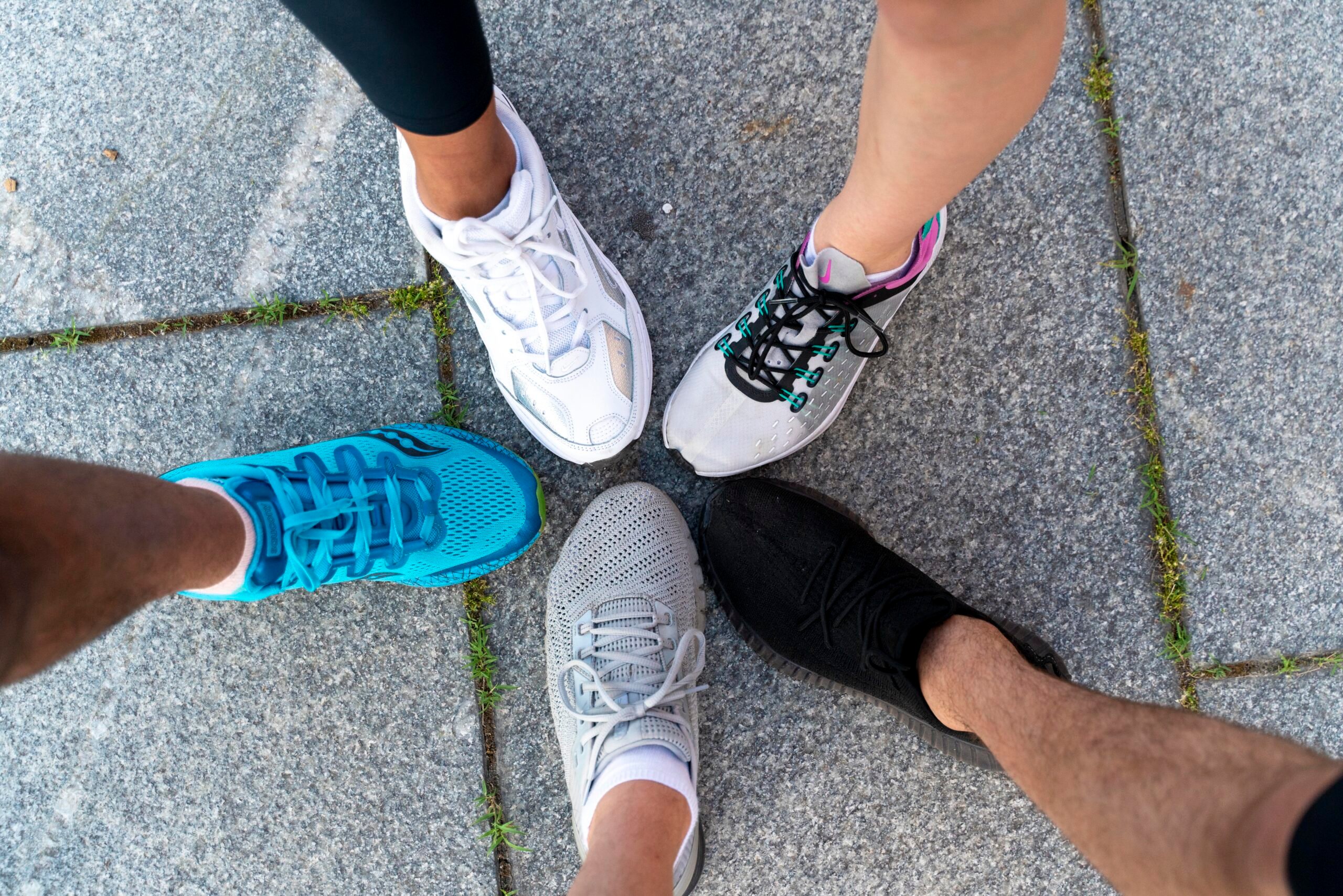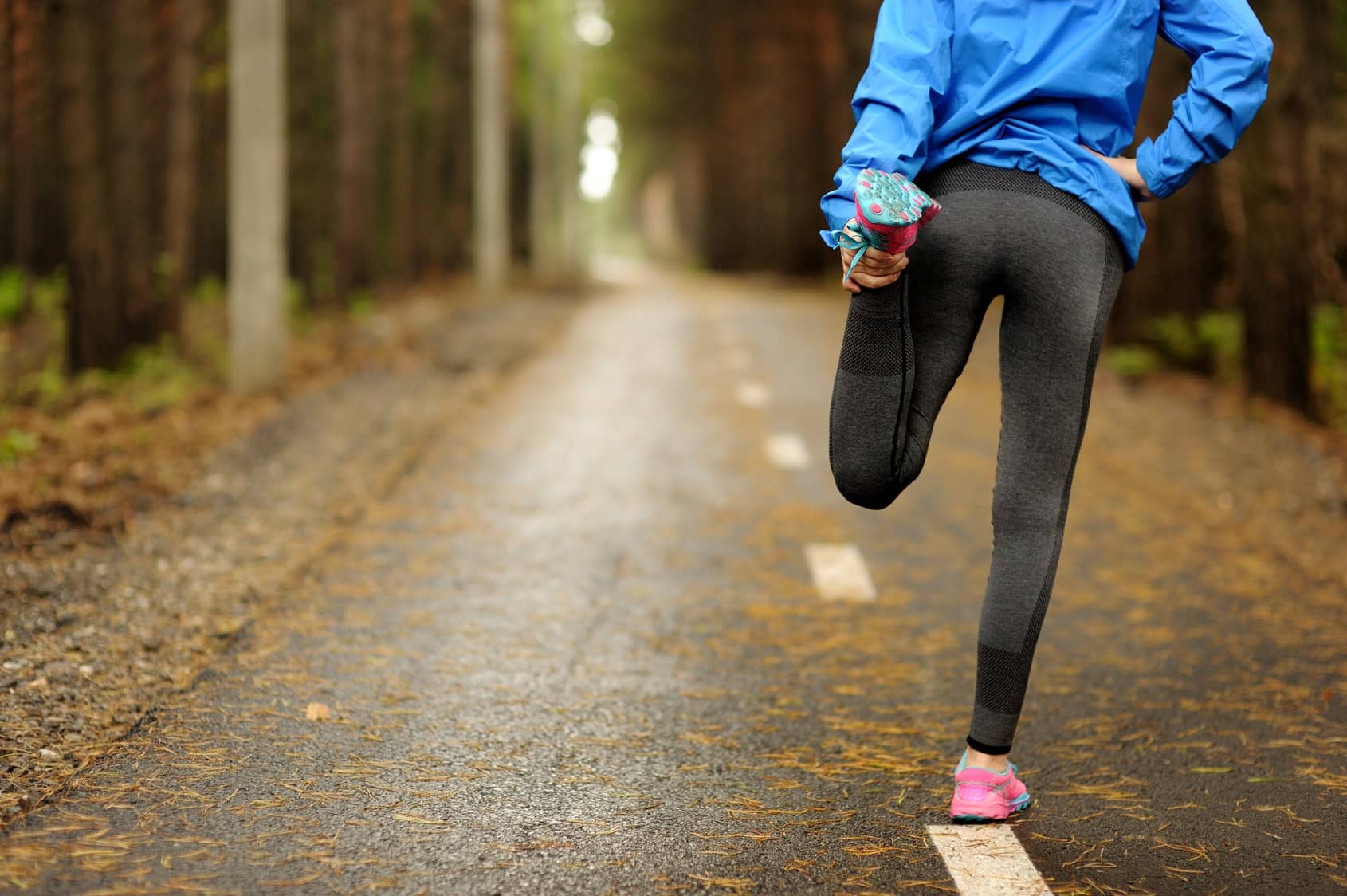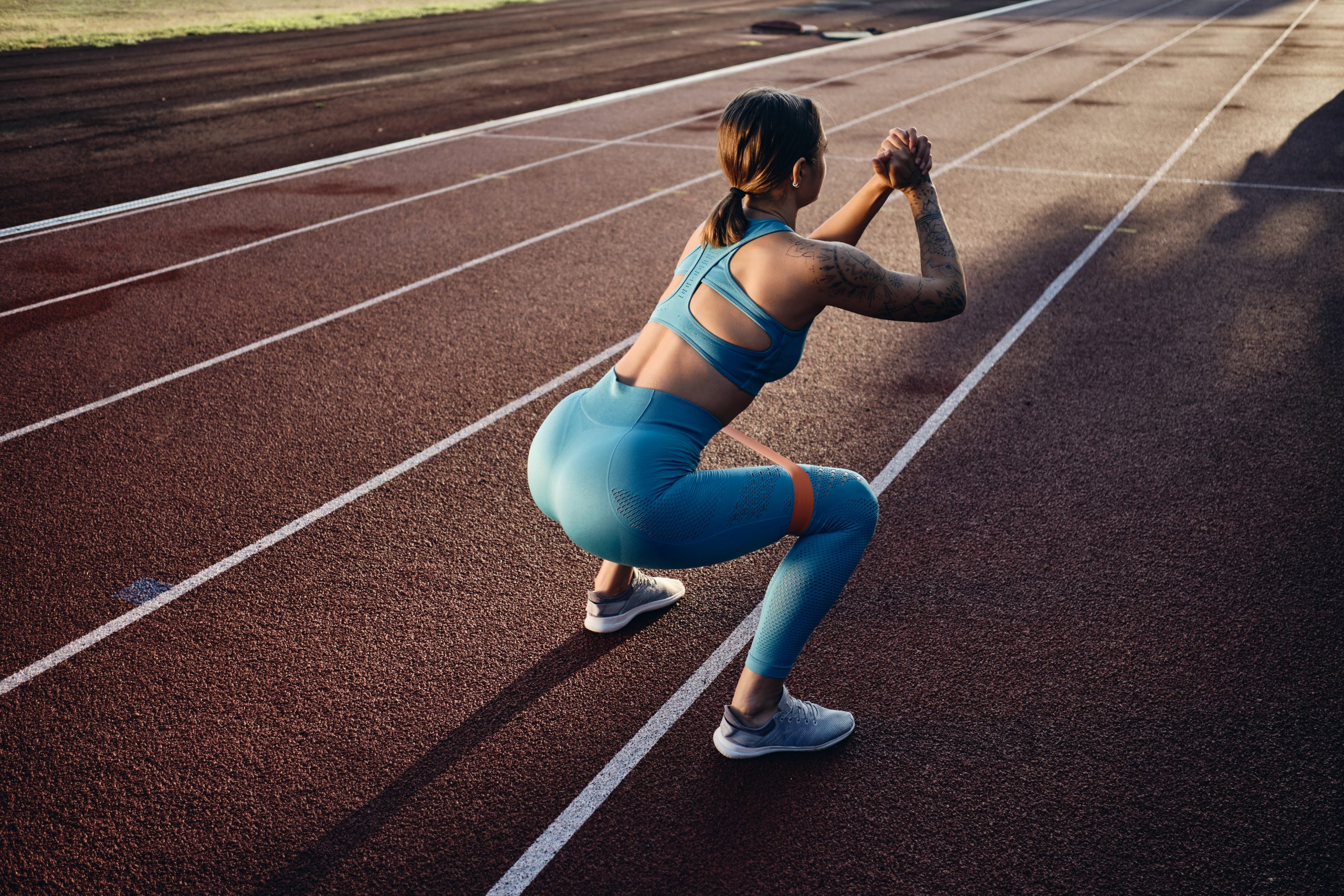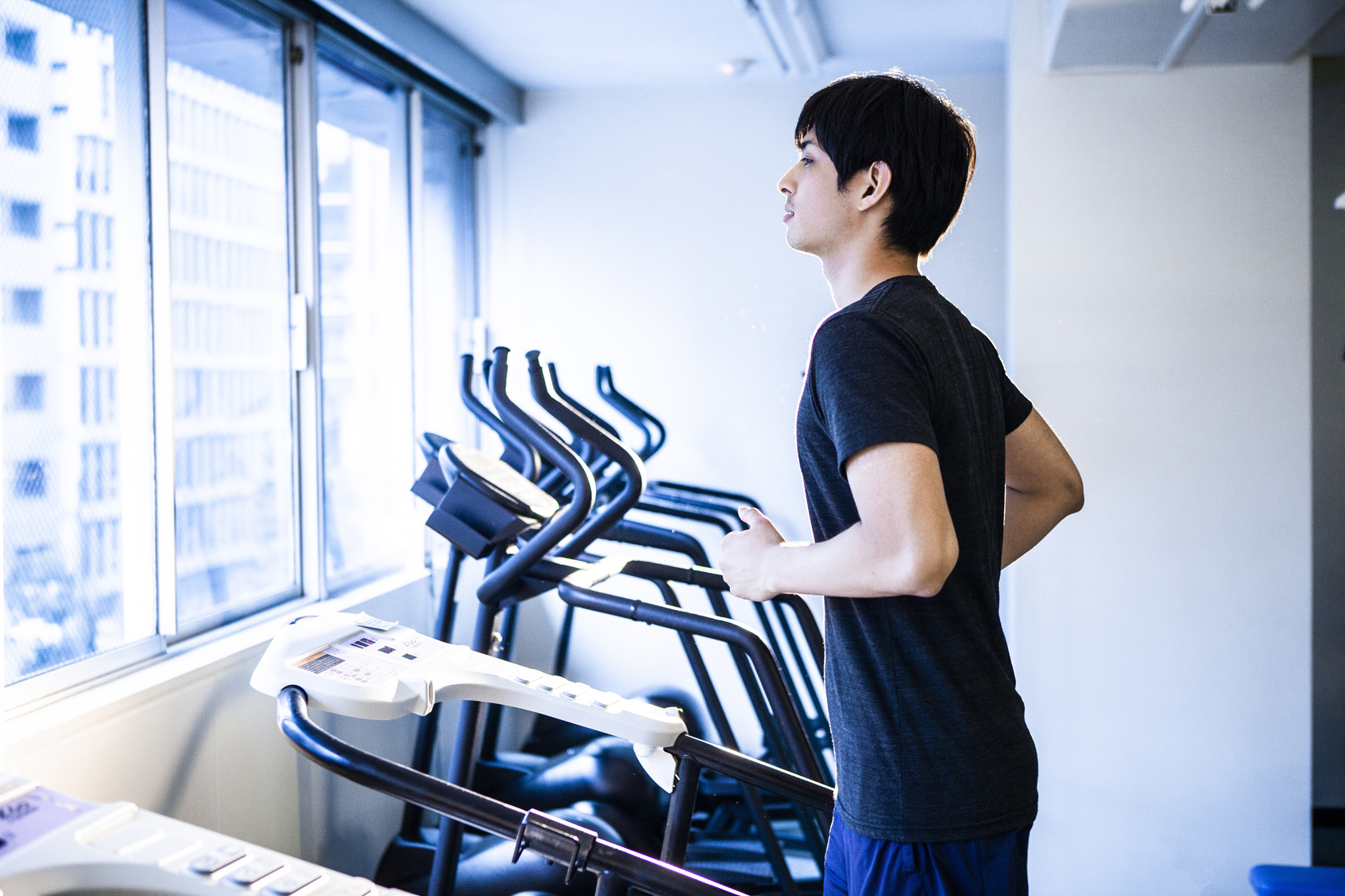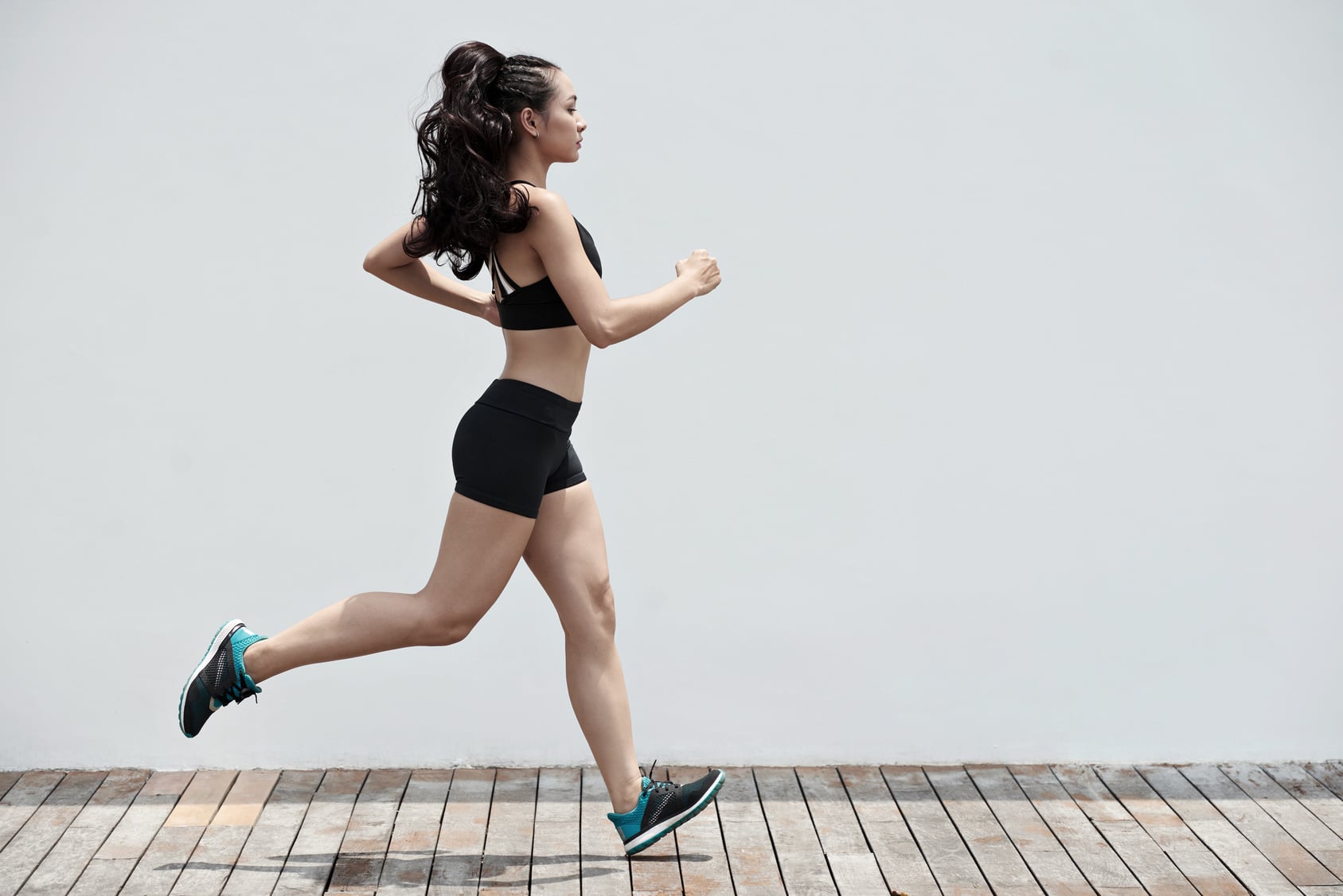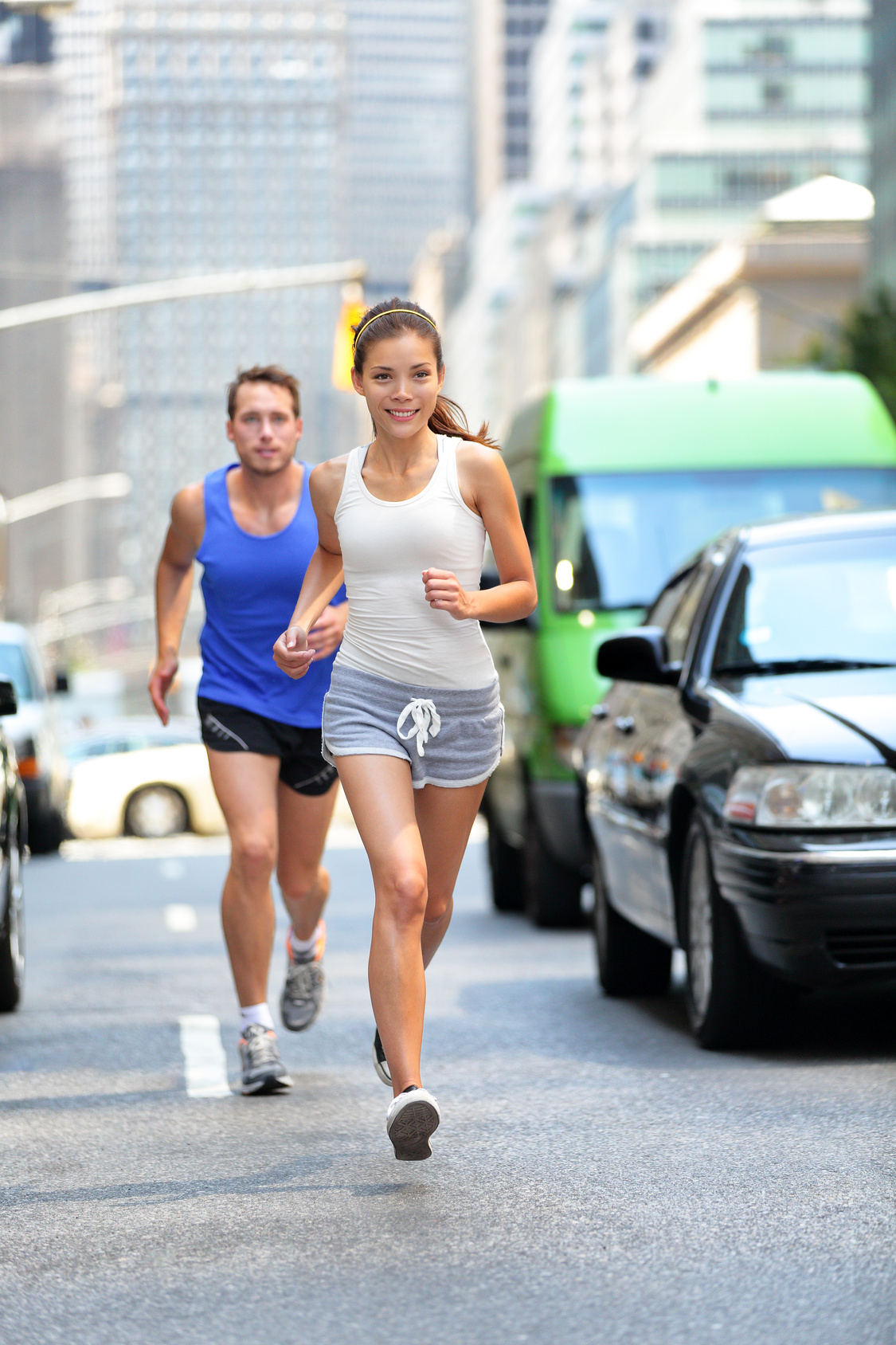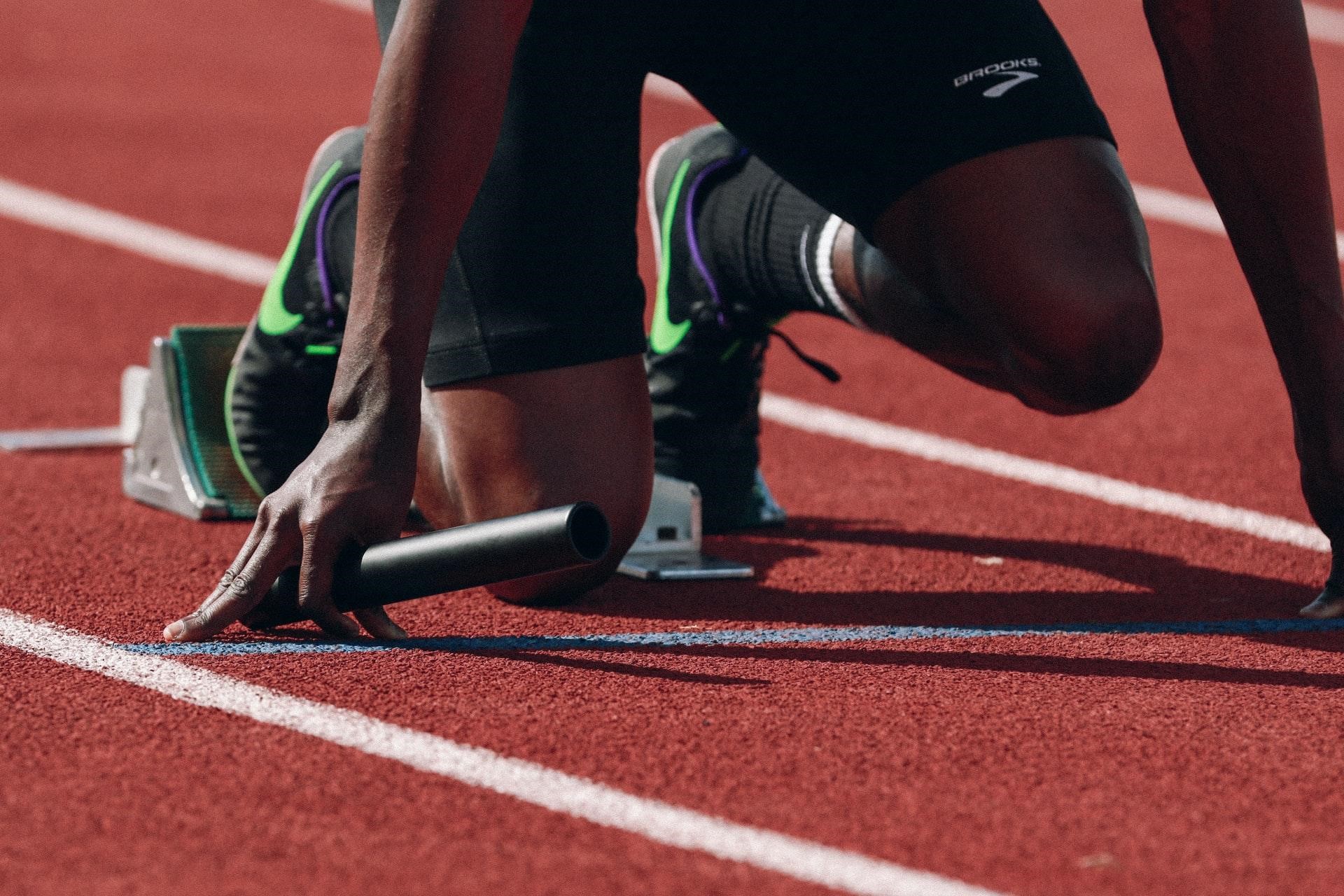If you have never experienced lower abdominal pain while running, then consider yourself one of the lucky ones.
Whether it’s a stomach cramp, a side stitch, or the urge to sprint to the nearest porta-potty, stomach problems can really put a dint on your runs.
The pain may crop up suddenly and without warning. In some cases, the pain might fade after a few minutes but may also persist for the entirety of the run. That’s really annoying!
Fortunately, when you’re suffering from stomach pain while running, there are a number of likely culprits.
You should be able to narrow down the reason based on the symptoms.
So what are the main causes of abdominal pain while running? And most importantly, how can we treat and prevent them? That’s where today’s article comes in handy.
Top 4 Causes Of Lower Abdominal Pain While Running
Here are a few measures you can take right now to help treat and prevent the cramps altogether.
Lower Abdominal Pain Cause – 1: Side Stitch
Also known as exercise-related transient abdominal pain (ETAP), side stitches are one of the most common abdominal issues among runners.
As the name implies, a side stitch refers to the stabbing pain around the ribs while running, usually on the right side of the abdomen or even in the lower abdominal area. The pain can be achy or dull as well as sharp and stabbing. It comes out of sudden, without previous signs.
Research published in 2015 by Australian researchers revealed that 70 percent of runners surveyed reported having experienced a side stitch while running in the past year. Yes, it’s very common.
The Cause
Science is quite unsure what causes side stitches, but there are many theories.
The most common one is that it’s caused by the pulling of the belly organ ligaments on the diaphragm but could also be brought on by the bouncing forces inside the abdominal wall as well as running too soon after eating.
Other common causes that may contribute to side stitches include
- Bad form
- Improper breathing technique
- Consuming too much food or drinks before a run
How To Manage Side Stitches While Running
Take the following measures to manage running side stitches.
Stop on The Go
If you are suffering from a side stitch in the middle of a run, slow down your pace and give your body some time to recover.
If it’s not working, stop altogether and take a minute to stretch before continuing your run.
Try bending forward at the waist while engaging your core muscles. Remember to breathe deeply as this helps stretch the diaphragm, which in turn may help soothe your pain.
You can also place your hand in the affected region, then push on using your index and middle finger while inhaling. On each exhale, push a little deeper into the stitch until, hopefully, it starts fading.
Also, try stretching your arm of the affected side above your head, then lean to the opposite side. Hold for about 15 to 25 seconds, then repeat the stretch on the other side.
Never Run on Full Stomach
You shouldn’t run after eating a large meal or drinking a large amount of water.
Instead, space out your meals and runs by at least three to four hours. This is especially the case if you have a “slow” digestive system and/or a history of stomach cramps.
Hydrate
Dehydration can also cause cramping.
Build the habit of sipping small amounts of water before and during training, then make sure to drink plenty post-workout.
Planning to run for more than 45-60 minutes? Then take water with you and keep sipping a few swallows at regular intervals. This is especially the case in hot temperatures.
Change Your breathing
Your breathing technique may help relieve your side stitch.
Try inhaling on three steps and exhaling on two steps. And if you’re trying to pick up the pace, try a 2:1 ratio, inhaling on two steps then exhaling on one.
Just remember to slow down for a few minutes to allow you to keep up with that pattern.
Lower Abdominal Pain Cause – 2: Heart Burn
Another common cause of abdominal pain from running is what’s known as heartburn. This occurs when some of the stomach content “travels” back up into your food pipe, the esophagus.
The condition causes a stinging sensation in the upper abdomen as well as the chest and can cause burping, belching, gagging, and other uncomfortable symptoms while running.
If chronic, as in it occurs more than a couple of times per week followed by constant soureness in your mouth or throat, experts usually refer to it as gastroesophageal reflux disease (GERD).
The Cause
Running, which is a high-impact sport, can disturb the flow of acidic content in your stomach.
The harder you push yourself, the more commonly this strikes.
What’s more?
Running may trigger heartburn if the lower esophageal sphincter (LES) muscle is worn-out or too relaxed. This lets some stomach content escape into the esophagus, causing trouble.
Diet also matters. Certain foods, such as acidic foods, spicy food, and carbonated sodas, rich in gluten may also contribute to exercise-induced heartburn.
Keep in mind that in some cases, a heart burn-like pain can be a sign of something more serious, such as an ulcer, or God forbid, a heart attack.
How To Manage Heart Burn While Running
Take the following steps to treat and prevent heartburn during running.
Change Your Diet
It may take some trial and error to find the trigger but start by avoiding some of the usual culprits, chocolate, and food and drinks with tomato and citrus, spicy foods, and orange juice. Then see.
Avoid sleeping at least 2 hours after your last meal.
Eat Three to Four Hours Before Running
Experiment with how long before a run you can have a light snack—30 minutes, one hour, two hours, etc.—without any trouble.
Maybe you can have a small meal an hour pre-run trouble-free. Or you may need to eat three to four hours before running to give your stomach time to empty.
Loosen Your Waistband
In some cases, the reason behind your heartburn boils down to wearing tight clothing that compresses your stomach.
Try wearing roomier pair of running shorts and legwear. If you are using a belt, try loosening it. Also, pay attention to any compression garment you’re using.
Additional resource – Your guide to runners cough
Medicate
Taking over-the-counter drugs, such as Mylanta, nexium, or chewable antacids may also help.
Antacids work best as it’s the ingredient that neutralizes stomach ache. It works the fastest and be taken during your training if symptoms develop.
For stronger medication, try H2 blockers which you can get with a prescription.
Additional Resource – Here’s how to stop feeling nauseous after running and exercising.
Lower Abdominal Pain Cause – 3: Stomach Muscle Cramps
When you have food just before a run, your digestive system and muscles start fighting for blood flow. If the former wins, your muscles won’t get enough oxygen and nutrients to perform at their best.
If the latter wins, you will likely come down with stomach cramps.
Often confused with a side stitch, stomach muscle cramps are something else.
Stomach cramps are the contraction of the stomach and intestinal muscles. The involuntary muscle cramps may strike out of nowhere for no reason, but they’re common in runners.
When suffering from a muscle cramp, you might experience sharp pain as the muscle seizes up. It might also become tight and hard. The pain is usually intermittent but can turn chronic in some cases.
Causes
Common causes of stomach muscle cramps while running include:
- Running in the heat
- Lack of warm-up and stretching before training
- Dehydration
- Muscle fatigue and exhaustion
How To Manage Stomach Muscle Cramps While Running
Deal and prevent stomach cramps while running by doing the following.
Stop What You’re Doing
If one of your stomach muscles seizes up while running, stop running and gently stretch and massage the muscle with your fingertip. In most cases, the pain will fade quickly on its own. Feel free to apply ice to soothe any lingering soreness and heat to loosen tight muscles. If you’re not a fan of cold compression, try a hot compression pad.
Additional resource – Side stitches while running
Stay Well Hydrated
Muscles are less pliable when they aren’t properly lubricated, especially during running. This, in turn, may set the stage for cramps.
As a rule of thumb, drink plenty of water throughout the day. This will help ensure that you’re well-hydrated at any moment of the day.
More specifically, drink 12 to 16 ounces of water the hour before a run. Planning to run for more than 30-45 minutes? Drink two to four ounces every 10-15 minutes during your run.
Additional Resource – Can You Run With An Abdominal Strain?
Warm-Up
I cannot emphasize enough the importance of warming up properly before a run, especially when it comes to preventing running pains—muscle cramps are no exception.
Cold muscles are also prone to overstretching, which, again, may cause a cramp.
Additional Resource -Your guide to jaw pain while running
Lower Abdominal Pain Cause – 4: Abdominal Strain
Another less common reason for stomach pain in runners is actual trauma or injury to the abdominal muscles.
When you have an abdominal muscle strain, any of the muscles of the abdomen can be injured, causing extreme pain with any core movement as well as deep breathing, laughing, coughing, or sneezing.
You may also notice bruising, swelling, weakness, or loss of muscle function—this, of course, depends on the severity of the strain as it can vary from a minor nuisance to full rupture.
The Causes
Abdominal muscle strains are usually brought on by direct impact, being overworked, or overstretching.
The main suspects include:
- Intense sprinting
- Sudden twisting or fast movement
- Bad running form while spiriting
- Lack of proper rest for overused muscles
- Lifting heavy objects with improper form
- Bad weight lifting technique
- Sneezing, laughing, or coughing too hard.
How To Manage Abdominal Strains While Running
Take the following steps to help speed up recovery and prevent abdominal strains while exercising:
Medicate
To soothe pain, consider taking over-the-counter (OTC) drugs, such as naproxen sodium (Aleve) and ibuprofen (Advil). This helps relieve swelling and inflammation.
Core Work
Strengthen your core if you’re prone to abdominal muscle tears.
Core training not only will help you prevent abdominal pain but can also help prevent overuse injury as well as improve performance.
Some of the best core exercises to perform include:
- Planks
- Russian twists
- Bridges
- Boat
- Mountain climbers
Consult A Physician
If the pain is too excruciating and/or you experience a complete loss of muscle function, consult a doctor immediately as it may indicate a complete tear.
Otherwise, most cases of abdominal muscle strains can be managed at home by:
- Applying ice on the affected area for 10 to 15 minutes, three to four times a day, to help soothe swelling.
- Stopping any type of vigorous activity that makes the pain worse
- Wrapping an elastic bandage around your midsection to help limit movement and swelling.
Apply this protocol for at least three days after the injury. Return to running gradually only when the pain and swelling have faced.
Additional resource – Common cause of lower leg pain while running
Stomach Pain While Running – When To See A Doctor?
If you’re chronically suffering from stomach problems while exercising, you might be dealing with an issue not directly related to your workout routine.
When it’s the case, consult a doctor to be evaluated for proper treatment.
This is especially the case if normal daily activities such as sitting, walking, or sleeping are disturbed because of your stomach pain.
Visit a doctor if you experience any of the following symptoms:
- Shortness of breath
- Stabbing pain with burning sensation,
- Tenderness around the abdominal region followed by oversweating
- Frequent constipation
- Frequent diarrhea and cramping
- Bloody stools
- Bloating, gas, and nausea whether you exercise or not.
Your doctor can check for any more serious medical conditions as well as prescribe the right drugs to treat symptoms and soothe the pain.
And most importantly, if you have any chest pain or any history in your family with a heart condition either triggered by running or not, seek medical help immediately.
Additional Resource – Here’s your guide to Anterior Tibial Tendonitis
Lower abdominal pain while running – The Conclusion
There you have it! If you’re experiencing lower abdominal pain while running and would love to know more about the causes (as well as how to deal with them), today’s post should provide you with enough guideposts to get you started on the right path. Stay safe.
Please feel free to leave your comments and questions in the section below.
In the meantime, thank you for dropping by.
Keep training strong.
David D.



